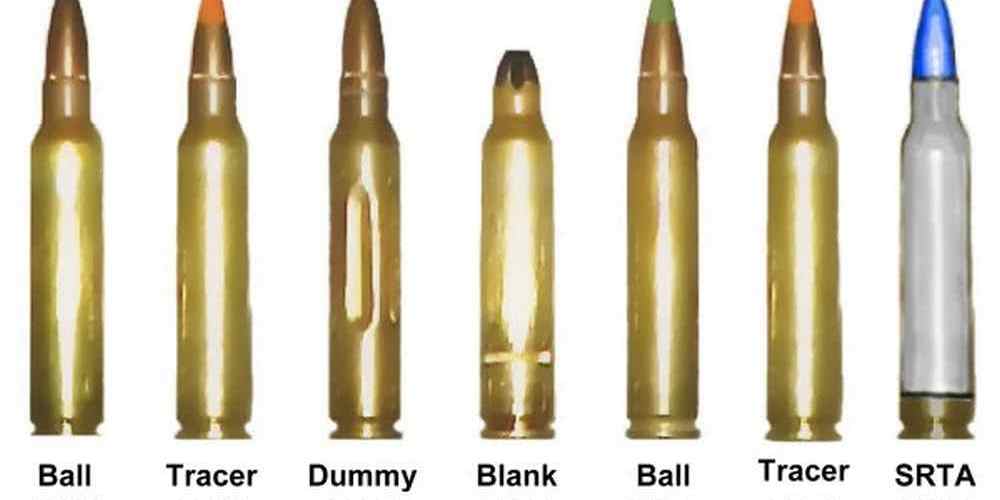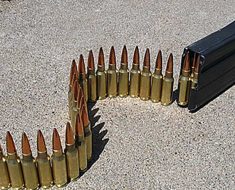Optimal performance starts with the right grain weight.
Pros and Cons of Using 55 Grain AR15 Ammunition
When it comes to choosing the best grain weight for AR15 ammunition, there are a lot of factors to consider. One of the most popular grain weights for AR15 ammunition is 55 grain. This weight is commonly used for target shooting, hunting, and self-defense. However, like any ammunition weight, there are pros and cons to using 55 grain AR15 ammunition.
One of the biggest advantages of using 55 grain AR15 ammunition is its versatility. This weight is suitable for a wide range of shooting activities, making it a popular choice among gun owners. Whether you are shooting targets at the range or hunting game in the field, 55 grain AR15 ammunition can get the job done effectively.
Another advantage of using 55 grain AR15 ammunition is its affordability. Compared to heavier grain weights, 55 grain ammunition is typically more budget-friendly. This makes it a great option for shooters who want to practice regularly without breaking the bank. Additionally, the availability of 55 grain AR15 ammunition is high, making it easy to find at most gun stores and online retailers.
In terms of performance, 55 grain AR15 ammunition offers good accuracy and recoil control. The lighter weight of the bullet allows for faster muzzle velocity, which can result in better accuracy at longer distances. Additionally, the recoil of 55 grain AR15 ammunition is generally manageable, making it easier for shooters to stay on target during rapid fire.
However, there are some drawbacks to using 55 grain AR15 ammunition. One of the main disadvantages is its limited stopping power. Due to the lighter weight of the bullet, 55 grain ammunition may not be as effective at stopping a threat compared to heavier grain weights. This is something to consider if you are using your AR15 for self-defense purposes.
Another potential downside of using 55 grain AR15 ammunition is its performance in windy conditions. Lighter bullets are more susceptible to wind drift, which can affect accuracy at longer distances. If you frequently shoot in windy environments, you may want to consider using a heavier grain weight for better performance.
Overall, the decision to use 55 grain AR15 ammunition comes down to personal preference and intended use. If you are looking for a versatile and affordable option for target shooting or hunting, 55 grain ammunition may be the right choice for you. However, if you prioritize stopping power or plan to shoot in windy conditions, you may want to explore heavier grain weights.
In conclusion, 55 grain AR15 ammunition has its pros and cons, like any ammunition weight. It offers versatility, affordability, and good performance in terms of accuracy and recoil control. However, it may lack stopping power and be less effective in windy conditions. Ultimately, the best grain weight for AR15 ammunition depends on your individual needs and preferences.

Exploring the Performance of 62 Grain AR15 Ammunition
When it comes to choosing the best grain weight for AR15 ammunition, there are a few factors to consider. One of the most popular choices among AR15 shooters is the 62 grain weight. This weight is often seen as a good balance between light and heavy bullets, offering a good mix of speed and accuracy.
The 62 grain weight is commonly used for target shooting, hunting, and self-defense. It is known for its versatility and ability to perform well in a variety of situations. The weight of a bullet is measured in grains, with one grain equal to 1/7000th of a pound. The 62 grain weight falls in the middle range of bullet weights for the AR15, making it a popular choice for many shooters.
One of the main advantages of the 62 grain weight is its ability to maintain accuracy over long distances. The weight of the bullet helps it to resist wind drift and maintain a stable trajectory. This makes it a good choice for shooting at targets that are farther away. The 62 grain weight also offers good penetration and stopping power, making it effective for hunting larger game or for self-defense situations.
Another benefit of the 62 grain weight is its compatibility with a wide range of AR15 rifles. This weight is commonly used in both 5.56mm and .223 caliber rifles, making it a versatile option for shooters who own multiple rifles. The 62 grain weight is also widely available and affordable, making it a cost-effective choice for shooters who go through a lot of ammunition.
In terms of performance, the 62 grain weight offers a good balance between speed and accuracy. The weight of the bullet helps it to maintain a stable flight path, while still allowing for a high muzzle velocity. This makes it a good choice for shooters who want a bullet that can reach targets quickly and accurately.
When choosing the best grain weight for AR15 ammunition, it’s important to consider your shooting needs and preferences. The 62 grain weight is a popular choice for many shooters due to its versatility, accuracy, and affordability. Whether you’re target shooting, hunting, or using your AR15 for self-defense, the 62 grain weight is a reliable option that can meet your needs.
In conclusion, the 62 grain weight is a versatile and effective choice for AR15 ammunition. Its balance of speed, accuracy, and affordability make it a popular option among shooters. Whether you’re a seasoned marksman or a beginner, the 62 grain weight is a reliable choice that can help you achieve your shooting goals. So next time you’re stocking up on ammunition for your AR15, consider giving the 62 grain weight a try.
The Impact of 69 Grain AR15 Ammunition on Accuracy
When it comes to choosing the best grain weight for AR15 ammunition, there are a few factors to consider. One of the most important factors is accuracy. The grain weight of the bullet can have a significant impact on the accuracy of your shots. In this article, we will explore the impact of 69 grain AR15 ammunition on accuracy.
The 69 grain AR15 ammunition is a popular choice among shooters for its balance of weight and velocity. This weight is considered to be a good compromise between the lighter and heavier grain weights available. The 69 grain bullet is known for its accuracy and consistency, making it a favorite among competitive shooters and hunters alike.
One of the reasons why the 69 grain AR15 ammunition is so accurate is its stability in flight. The weight of the bullet helps to stabilize it as it travels through the air, reducing the effects of wind and other external factors. This stability is crucial for achieving tight groupings and hitting your target consistently.
Another factor that contributes to the accuracy of the 69 grain AR15 ammunition is its ballistic coefficient. The ballistic coefficient is a measure of how well a bullet retains its velocity and energy as it travels through the air. A higher ballistic coefficient means that the bullet will maintain its speed and trajectory better, resulting in more accurate shots.
In addition to stability and ballistic coefficient, the 69 grain AR15 ammunition also offers good terminal performance. The weight of the bullet allows it to penetrate deep into the target, delivering maximum energy and stopping power. This is important for hunting applications where a clean and ethical kill is desired.
Overall, the 69 grain AR15 ammunition is a solid choice for shooters looking for accuracy and consistency. Its balance of weight, stability, and terminal performance make it a versatile option for a variety of shooting scenarios. Whether you are competing in a match or hunting in the field, the 69 grain bullet is sure to deliver reliable results.
In conclusion, the 69 grain AR15 ammunition is a great choice for shooters who prioritize accuracy. Its stability in flight, high ballistic coefficient, and terminal performance make it a top contender in the world of AR15 ammunition. Whether you are a competitive shooter or a hunter, the 69 grain bullet is sure to meet your needs and help you achieve your shooting goals. So next time you are shopping for ammunition, consider giving the 69 grain AR15 ammunition a try – you won’t be disappointed.
Comparing 75 Grain vs 77 Grain AR15 Ammunition for Long Range Shooting
When it comes to long-range shooting with an AR15, choosing the right grain weight for your ammunition is crucial. Two popular options for long-range shooting are 75 grain and 77 grain bullets. Both have their own advantages and disadvantages, so it’s important to understand the differences between the two before making a decision.
Let’s start by looking at the 75 grain bullet. This weight is a common choice for many shooters due to its versatility. The 75 grain bullet is lighter than the 77 grain bullet, which means it has a higher velocity and flatter trajectory. This can be beneficial when shooting at longer distances, as the bullet will maintain its speed and accuracy over a greater distance.
On the other hand, the 77 grain bullet is slightly heavier and has a higher ballistic coefficient than the 75 grain bullet. This means that it will retain its energy and velocity better over longer distances, making it a popular choice for precision shooters who need consistent performance at extended ranges.
When comparing the two, it’s important to consider the specific requirements of your shooting situation. If you are shooting at shorter distances or need a flatter trajectory, the 75 grain bullet may be the better option for you. However, if you are shooting at longer ranges and need better energy retention, the 77 grain bullet may be the way to go.
Another factor to consider when choosing between the two is the twist rate of your rifle’s barrel. The twist rate refers to how many inches it takes for the rifling in the barrel to make one complete revolution. Different twist rates are better suited to different bullet weights, so it’s important to match the twist rate of your barrel to the grain weight of your ammunition for optimal performance.
In general, a faster twist rate is better suited to heavier bullets, such as the 77 grain bullet, while a slower twist rate may be better for lighter bullets like the 75 grain. However, it’s always a good idea to test different bullet weights and twist rates to see what works best for your specific setup.
Ultimately, the best grain weight for AR15 ammunition will depend on your individual shooting needs and preferences. Both the 75 grain and 77 grain bullets have their own strengths and weaknesses, so it’s important to consider factors such as distance, trajectory, and twist rate when making your decision.
In conclusion, when comparing 75 grain vs 77 grain AR15 ammunition for long-range shooting, there is no one-size-fits-all answer. It’s important to consider your specific shooting requirements and test different options to see what works best for you. Whether you choose the lighter and faster 75 grain bullet or the heavier and more stable 77 grain bullet, both can be effective choices for long-range shooting with an AR15.
Factors to Consider When Choosing the Best Grain Weight for AR15 Ammunition
When it comes to choosing the best grain weight for AR15 ammunition, there are several factors to consider. The grain weight of a bullet refers to its weight in grains, with one grain equaling approximately 1/7000th of a pound. The grain weight of a bullet can have a significant impact on its performance, accuracy, and recoil. In this article, we will discuss some of the key factors to consider when selecting the best grain weight for your AR15 ammunition.
One of the first factors to consider when choosing the best grain weight for AR15 ammunition is the intended use of the ammunition. Different grain weights are better suited for different purposes. For example, lighter grain weights, such as 55 or 62 grains, are often used for target shooting and plinking, as they offer higher velocities and flatter trajectories. On the other hand, heavier grain weights, such as 77 or 80 grains, are better suited for long-range shooting and hunting, as they offer better penetration and accuracy at longer distances.
Another important factor to consider when choosing the best grain weight for AR15 ammunition is the twist rate of your rifle’s barrel. The twist rate refers to the rate at which the rifling in the barrel twists, and it can have a significant impact on the stability and accuracy of different grain weights. Generally, heavier grain weights require a faster twist rate to stabilize the bullet in flight. For example, a 1:7 twist rate is ideal for stabilizing heavier grain weights, while a 1:9 twist rate is better suited for lighter grain weights.
It is also important to consider the velocity and energy of the ammunition when selecting the best grain weight for your AR15. Heavier grain weights typically offer higher energy and better penetration, making them ideal for hunting and self-defense. However, lighter grain weights often offer higher velocities and flatter trajectories, making them better suited for target shooting and competition. It is important to consider your intended use and shooting conditions when selecting the best grain weight for your AR15 ammunition.
In addition to considering the intended use, twist rate, velocity, and energy of the ammunition, it is also important to consider the recoil of different grain weights. Heavier grain weights typically produce more recoil, which can affect your accuracy and follow-up shots. Lighter grain weights, on the other hand, produce less recoil, making them easier to shoot and control. It is important to consider your own comfort level and shooting ability when selecting the best grain weight for your AR15 ammunition.
In conclusion, when choosing the best grain weight for AR15 ammunition, it is important to consider a variety of factors, including the intended use, twist rate, velocity, energy, and recoil of the ammunition. By carefully considering these factors and selecting the grain weight that best suits your needs and shooting style, you can ensure optimal performance and accuracy with your AR15 rifle.






